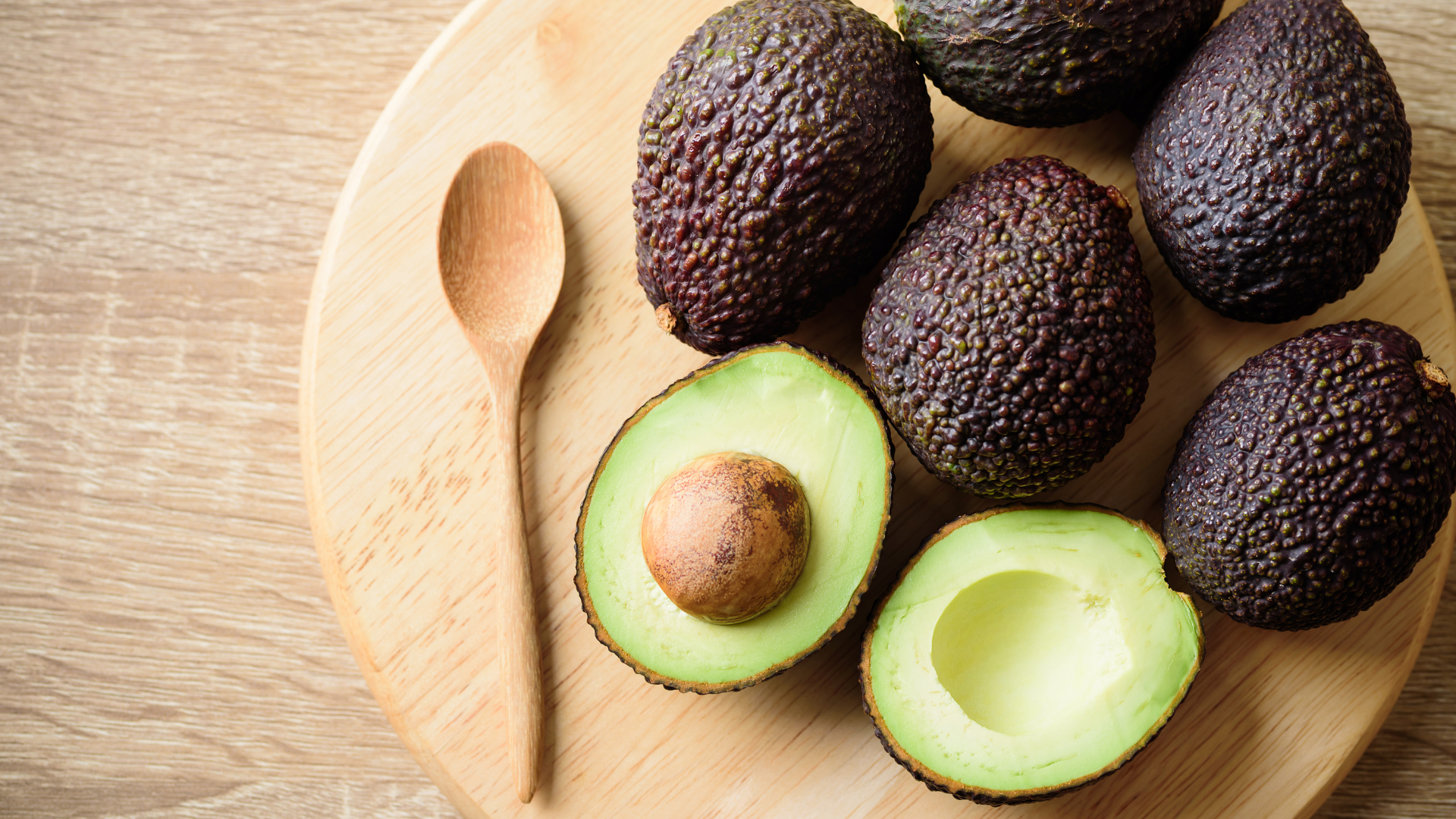Heart-Smart & Soul-Fueled: A Guide to Raising Your Good Cholesterol
This is a subtitle for your new post

Your healthcare provider might say “eat healthy and exercise,” but what does that actually mean? And what does a “healthy diet” even look like—especially when cultural foods and preferences vary so widely?
Visits with your doctor or nurse are often short, and advice like “eat more fruits and vegetables” or “follow the Mediterranean diet” might feel too vague. While those are great starting points, they don’t tell the whole story—especially when it comes to improving something important called HDL-C, or high-density lipoprotein cholesterol. You might know it as your “good” cholesterol.
What Is HDL-C and Why Does It Matter?
Not all cholesterol is bad! HDL-C helps clean up excess cholesterol in your blood and carries it to your liver to be removed. This process is called reverse cholesterol transport, and it helps protect your arteries and heart. HDL also has anti-inflammatory and antioxidant effects that lower your risk of heart disease.
When cholesterol builds up on your artery walls, it forms plaque. That’s called atherosclerosis, and it can lead to heart attacks or strokes if the plaque ruptures. Low levels of HDL-C have been linked to an increased risk of heart disease, certain cancers, and autoimmune conditions. But here’s the good news: you can improve your HDL-C through food, exercise, and a few other healthy habits.
How Is HDL-C Measured?
HDL-C is checked through a simple blood test called a lipid panel (or cholesterol test). This is a routine test that your healthcare provider might order during a regular check-up.
A lipid panel usually measures:
- Total cholesterol
- LDL cholesterol (the "bad" kind)
- HDL cholesterol (the "good" kind)
- Triglycerides (another type of fat in your blood)
You may need to fast (not eat or drink anything except water) for 9–12 hours before the test, depending on what your provider recommends.
Understanding Heart Disease Risk
Before we dive into how to eat and exercise for better HDL, let’s talk briefly about risk. Conditions like:
- Heart attacks (myocardial infarction)
- Chest pain (angina)
- Stroke (brain attacks)
- Mini-strokes (Transient Ischemic Attacks aka TIAs)
- Narrowed arteries in the heart or brain
...are all linked to atherosclerotic cardiovascular disease (ASCVD).
HDL is just one piece of the risk factor equation. There’s a tool called the ASCVD risk calculator that helps estimate your personal risk. It looks at your age, blood pressure, diabetes status, and other factors. One of those factors is race, which has been used in some calculators. But recent research shows that using race in this way can cause more harm than good, especially for people of color who already face barriers in healthcare.
At Blossom Med, we believe in equity and inclusive care. We listen with empathy and work to deliver healthcare that supports everyone’s unique story and needs.
You can check your risk using this ASCVD Risk Calculator – race is optional.
Remember: the calculator is just one piece. Talk to a licensed healthcare provider to interpret and discuss your results.
How to Increase HDL-C with Food and Exercise
Now that you understand the “why,” let’s talk about the “how.”
Certain foods are known to improve your HDL-C levels—especially those rich in unsaturated fats. These fats help lower the “bad” cholesterol (LDL) while supporting your good cholesterol (HDL).
The Mediterranean diet—which focuses on olive oil, legumes, fish, nuts, and whole grains—has been shown to improve HDL-C function, not just the number.
Top Foods That May Raise HDL-C
Here are some HDL-friendly foods to add to your meals:
- Virgin olive oil
- Fatty fish (like salmon, mackerel, tuna, sardines)
- Nuts (almonds, walnuts, peanuts, pecans)
- Legumes (beans, lentils, chickpeas)
- Avocados
Some plant-based oils, like flaxseed, are also rich in omega-3 fatty acids, which support healthy cholesterol levels.
Even artichoke and bergamot (a citrus fruit) have shown benefits in some studies.
Avocados: A Heart-Healthy Powerhouse
Avocados are rich in monounsaturated fats and fiber, both of which support HDL-C. Eating about half to one avocado a day (68–136 grams) may raise your HDL-C slightly and help reduce belly fat, weight, and risk for metabolic syndrome.
It’s a good idea to replace unhealthy fats or refined carbs with avocado—simply adding it on top of a fast-food diet won’t do the trick.
Limit These for Better Heart Health
To further improve your HDL-C:
- Avoid trans fats and reduce saturated fats (like those found in fried food)
- Cut back on or eliminate high-sugar products and ultra processed foods
How Exercise Helps Raise Your Good Cholesterol
Food isn’t the only way to raise your HDL-C—exercise plays a big role too!
The American Heart Association says that aerobic exercise—also called endurance exercise—is the most effective type of physical activity to increase your HDL-C levels.
What Counts as Aerobic Exercise?
Aerobic exercise gets your heart rate up and includes activities like:
- Brisk walking
- Jogging or running
- Swimming
- Cycling
- Dancing
To name a few examples.
Doing these activities for at least 120-150 minutes per week (about 30 minutes, 4-5 days a week) has been shown to raise HDL-C by about 2 to 5 mg/dL, or roughly 5%, which may not seam like a lot, but in conjunction with good food habits it all adds up! You can break it up into 30 minutes a day, 4-5 days a week, or do shorter sessions throughout the day. Even better—some of those improvements can happen in just 2 months of regular activity, especially if you're just getting started.
If you can do more, great! Longer duration and higher intensity (like running or cycling at a fast pace) are linked to even bigger improvements in HDL-C.
What About Strength Training?
Resistance training (like lifting weights or using resistance bands) can also help, but the effect on HDL-C is usually smaller and more variable. That said, combining aerobic and resistance exercises is great for your overall health and can help with blood sugar, blood pressure, and muscle strength, and is especially important if you are taking a GLP-1, like semaglutide or tirzepatide, for weight loss to maintain your muscle mass.
Exercise Improves HDL Function, Too
Exercise doesn’t just increase the amount of HDL in your blood—it also makes it work better. Regular aerobic activity helps HDL particles:
- Get bigger and more effective
- Remove more cholesterol from your body
- Act like antioxidants, protecting your blood vessels
This means that even if your HDL-C number only goes up a little, the protective power of your HDL improves—a win-win!
More intense activities like running, cycling, or swimming laps offer even greater benefits, especially if you’re working out at 65–80% of your peak effort.
As always, make sure to consult a healthcare professional before starting an exercise routine to make sure it’s safe and appropriate for you.
A Few Important Reminders
While raising your HDL-C is a great goal, HDL-C levels alone don’t tell the whole story when it comes to heart health. It’s just one piece of the puzzle.
To lower your overall risk for heart disease and stroke, it’s important to make other healthy lifestyle changes too, like:
- Reduce or eliminate fried foods
- Quitting smoking
- Limiting alcohol
- Regular check ups with your healthcare provider
Cardiovascular disease (CVD) is still the leading cause of death for middle-aged and older adults. But here’s the hopeful part—about 1 in 4 of those deaths can be prevented with the right care and lifestyle choices.
Taking care of your heart doesn’t have to be overwhelming. Even small changes—like taking daily walks or swapping fried food for grilled—can make a real difference over time.
The Takeaway
Raising your HDL-C isn’t about finding one magic food or quick fix. It’s about making small, steady changes that add up over time—like:
- Choosing healthy fats (like olive oil, nuts, and avocado)
- Eating more plants and fish
- Cutting back on sugar and processed foods
- Moving your body every day
These habits don’t just help your cholesterol—they support your whole body and your long-term health.
It’s never too late to start. And you don’t have to do it alone.
At Blossom Med, we’re here to walk with you—step by step—with care, support, and compassion. Whether you’re just getting started or looking to build on progress you’ve already made, we’re here to help you bloom into your healthiest self.
References:
Avocado consumption and cardiometabolic health: A systematic review and meta-analysis. (2024). James-Martin, G., Brooker, P. G., Hendrie, G. A., & Stonehouse, W. Journal of the Academy of Nutrition and Dietetics, 124(2), 233–248.e4. https://doi.org/10.1016/j.jand.2022.12.008
Avocado consumption and risk factors for heart disease: A systematic review and meta-analysis. (2018). Mahmassani, H. A., Avendano, E. E., Raman, G., & Johnson, E. J. The American Journal of Clinical Nutrition, 107(4), 523–536. https://doi.org/10.1093/ajcn/nqx078
Behavioral counseling interventions to promote a healthy diet and physical activity for cardiovascular disease prevention in adults without cardiovascular disease risk factors: US Preventive Services Task Force recommendation statement. (2022). Mangione, C. M., Barry, M. J., Nicholson, W. K., et al. JAMA, 328(4), 367–374. https://doi.org/10.1001/jama.2022.10951
Centers for Disease Control and Prevention. (2013). Vital signs: Avoidable deaths from heart disease, stroke, and hypertensive disease—United States, 2001–2010. MMWR Morbidity and Mortality Weekly Report, 62, 721–727.
Cho, K. H., Nam, H. S., Kang, D. J., Zee, S., & Park, M. H. (2023). Enhancement of high-density lipoprotein (HDL) quantity and quality by regular and habitual exercise in middle-aged women: Larger particle size and higher antioxidant ability of HDL. International Journal of Molecular Sciences, 24(2), 1151. https://doi.org/10.3390/ijms24021151
Effects of diet on high-density lipoprotein cholesterol. (2011). Siri-Tarino, P. W. Current Atherosclerosis Reports, 13(6), 453–460. https://doi.org/10.1007/s11883-011-0207-y
Effects of dietary components on high-density lipoprotein measures in a cohort of 1,566 participants. (2014). Kim, D. S., Burt, A. A., Ranchalis, J. E., et al. Nutrition & Metabolism, 11, 44. https://doi.org/10.1186/1743-7075-11-44
Effects of exercise on high-density lipoprotein levels in middle-aged and older individuals: A systematic review and meta-analysis. (2025). Liang, L., Peng, F., Wang, L., Lin, C., & Chi, H. Medicine, 104(6), e41493. https://doi.org/10.1097/MD.0000000000041493
Exercise standards for testing and training: A scientific statement from the American Heart Association. (2013). Fletcher, G. F., Ades, P. A., Kligfield, P., et al. Circulation, 128(8), 873–934. https://doi.org/10.1161/CIR.0b013e31829b5b44
Feig, J. E., Hewing, B., Smith, J. D., Hazen, S. L., & Fisher, E. A. (2014). High-density lipoprotein and atherosclerosis regression: Evidence from preclinical and clinical studies. Circulation Research, 114(1), 205–213. https://doi.org/10.1161/CIRCRESAHA.114.300760
Grao-Cruces, E., Varela, L. M., Martin, M. E., Bermudez, B., & Montserrat-de la Paz, S. (2021). High-density lipoproteins and Mediterranean diet: A systematic review. Nutrients, 13(3), 955. https://doi.org/10.3390/nu13030955
Hernáez, Á., Sanllorente, A., Castañer, O., et al. (2019). Increased consumption of virgin olive oil, nuts, legumes, whole grains, and fish promotes HDL functions in humans. Molecular Nutrition & Food Research, 63(6), e1800847. https://doi.org/10.1002/mnfr.201800847
Lichtenstein, A. H., Appel, L. J., Vadiveloo, M., et al. (2021). 2021 dietary guidance to improve cardiovascular health: A scientific statement from the American Heart Association. Circulation, 144(23), e472–e487. https://doi.org/10.1161/CIR.0000000000001031
Luna-Castillo, K. P., Lin, S., Muñoz-Valle, J. F., et al. (2021). Functional food and bioactive compounds on the modulation of the functionality of HDL-C: A narrative review. Nutrients, 13(4), 1165. https://doi.org/10.3390/nu13041165
Pownall, H. J., Rosales, C., Gillard, B. K., & Gotto, A. M. (2021). High-density lipoproteins, reverse cholesterol transport, and atherogenesis. Nature Reviews Cardiology, 18(10), 712–723. https://doi.org/10.1038/s41569-021-00538-z
Razavi, A. C., Jain, V., Grandhi, G. R., et al. (2024). Does elevated high-density lipoprotein cholesterol protect against cardiovascular disease? The Journal of Clinical Endocrinology & Metabolism, 109(2), 321–332. https://doi.org/10.1210/clinem/dgad406
Rondanelli, M., Giacosa, A., Morazzoni, P., et al. (2016). MediterrAsian diet products that could raise HDL-cholesterol: A systematic review. BioMed Research International, 2016, 2025687. https://doi.org/10.1155/2016/2025687
Sirtori, C. R., Corsini, A., & Ruscica, M. (2022). The role of high-density lipoprotein cholesterol in 2022. Current Atherosclerosis Reports, 24(5), 365–377. https://doi.org/10.1007/s11883-022-01012-y
Virani, S. S., Alonso, A., Benjamin, E. J., Bittencourt, M. S., Callaway, C. W., Carson, A. P., et al. (2020). Heart disease and stroke statistics—2020 update: A report from the American Heart Association. Circulation, 141, e139–e596. https://doi.org/10.1161/CIR.0000000000000757
Vyas, D. A., Eisenstein, L. G., & Jones, D. S. (2020). Hidden in plain sight—Reconsidering the use of race correction in clinical algorithms. New England Journal of Medicine, 383(9), 874–882. https://doi.org/10.1056/NEJMms2004740
Wilson, P. W. F., Jacobson, T. A., Martin, S. S., et al. (2021). Lipid measurements in the management of cardiovascular diseases: Practical recommendations from the National Lipid Association Writing Group. Journal of Clinical Lipidology, 15(5), 629–648. https://doi.org/10.1016/j.jacl.2021.09.046









